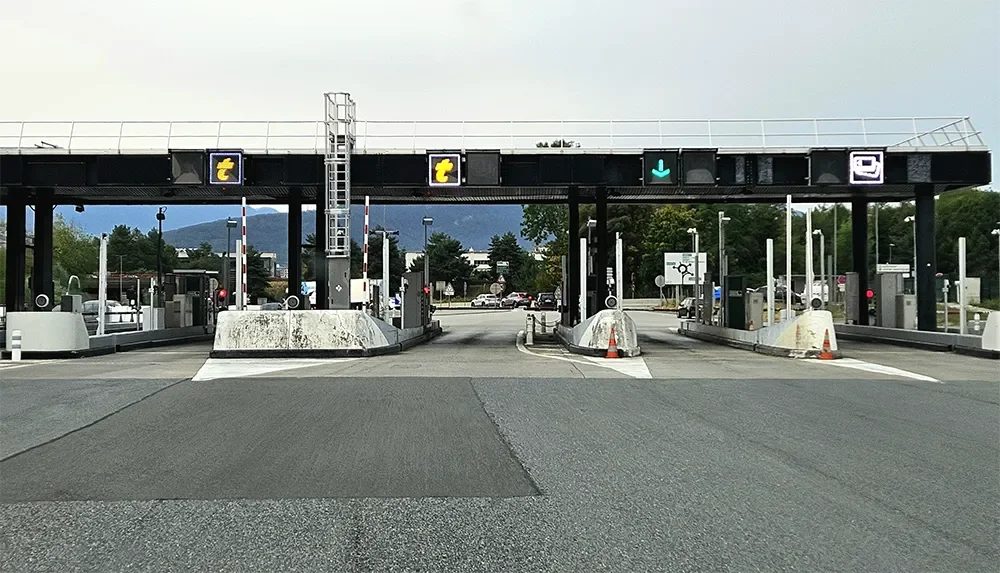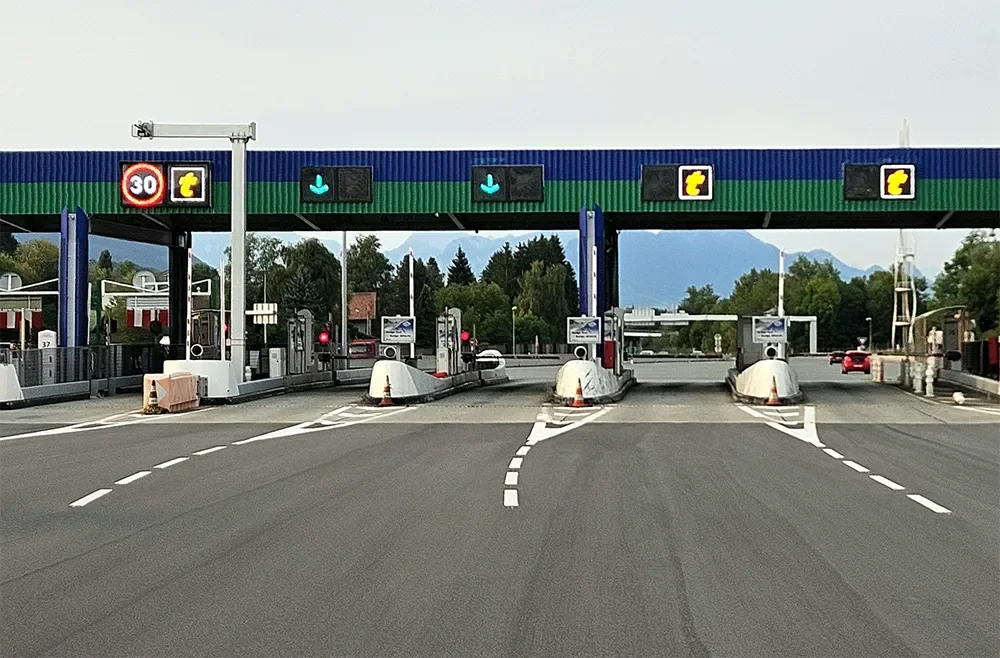Do Motorcycles Pay Tolls in France?
Motorbikes sometimes pay tolls in France; sometimes they don’t. It depends on the road.
That is our simplest answer to this question. To better understand this, let’s examine the classification of the French road network.
Road Categories in France
Motorway/Freeway
Autoroute in French (example - A26).
Red and yellow on road maps.
Maximum speed 130 kph.
Signs are blue.
National Road (example - N90)
The main road network connecting France consists of single or dual carriageways.
Routes Nationales in French
Red on the road maps.
Maximum speed: 80 kph on single-carriageways.
Maximum speed 110 kph on dual-carriageways.
Departmental Road (example - D902)
Smaller roads that often link smaller villages to towns.
Départementales in French.
Depending on their size, they can be orange, yellow, or white on a map.
Maximum speed 80 kph, always 50 kph in towns.
Where Are the Tolls in France?
In France, you will find tolls for passage only ever on an Autoroute - they are called ‘Péage’, which literally means toll or tollgate.
Most of the autoroute network in France is a paid service. You can find some short free ‘gratuite’ sections, often on the outskirts of cities or large towns, before you join the main Autoroute.
Generally, motorcycles would only use the paid autoroute network if needing to travel long distances within a time limit. It’s really not much fun, even less if your motorcycle doesn't have much protection against the wind.
But it's nice to have the option if you do need eat up some kilometres, especially if you’re short on time when coming to join us in the French Alps.
Autoroute Toll Cost for Motorcycles
There are five categories of vehicles for the Péage.
As motorcyclists, we fall into the lowest category, category five, for two wheels, which is roughly half the cost of driving a car through the French toll system.
For example, driving from Calais to Bourg Saint-Maurice (a 1,000km journey) on the toll roads would cost a car € 95.50, but costs a motorcycle € 54.80.
The pricing is reasonable considering the high quality of the roads and the abundance of service stations located every fifteen kilometres on average. There is rarely traffic on the ‘Péage’ for two main reasons:
The low population density in France and
The National road network is very well connected and maintained. It is the main choice for the French public to move from A to B (motorbike or not).
Service Stations on Toll Roads in France
The pleasant, convenient rest areas along France’s motorways are designed to encourage motorists to take regular breaks. The service stations vary in amenities; all have a toilet, but with some differences.
At smaller service stations, you will find the ‘sanisette’, a self-cleaning, unisex public toilet. Larger service areas have standard toilets.
Most service areas have coffee machines, picnic tables (often in wooded areas), and children’s play areas.
At the larger service areas, you will find food options such as :
Sandwiches and other fast-food options.
Self-service cafeteria.
Restaurant with waiter service.
The toll area shops offer
Regional specialities
Foodstuffs
Newspapers, magazines and books
Clothing, electronic equipment, etc.
On average, you’ll find a toll service station every 15 kilometres.
Please see the Autoroute service areas on the ASFA website.
The Best Roads for Motorcycles
The Autoroute offers a fast, direct, and paid service, while the national roads provide a good free alternative.
However, these national roads experience a significant amount of day-to-day traffic, and you can’t go more than a kilometre without navigating a roundabout.
Fun fact: Over half of the roundabouts in the world are located in France.
This brings us to the departmental roads, which can vary in size from single-track paths to beautiful, wide mountain passes.
Departmental roads tend to follow the natural contours of the land and its features, often resulting in some magical routes for motorcyclists, especially in the Alps!
The mountainous terrain and valleys carved by glaciers and rivers over thousands of years create a playground for riders, with sections of road that wouldn’t look out of place on a racetrack.
Ride Your Motorcycle on the Toll Roads to the French Alps
You’re booked in and are coming to ride the stunning Alpine roads in the French Alps with us.
We understand that you want to arrive here as quickly and safely as possible, so we recommend two routes for you, assuming you are coming from the Pas-de-Calais.
If you would like other routes, please contact Guide My Ride.
Toll Road Route 1
A26 (Calais to Reims to Troyes). Troyes is a beautiful small town, making it a great stopover.
A5, which turns into the A31, continues south around Dijon.
Then pick up the A6 to Lyon.
A432 around Lyon (which can get busy).
Then the A43, which turns into the A430 and then the N90, bringing you into the Tarentaise Valley all the way to Bourg-saint-Maurice.
Toll Road Route 2
You may want to consider avoiding Lyon due to its potential for traffic congestion, especially during rush hour.
In this case, take the A39 from Dijon.
Then the A40 past Bourg-en-Bresse (another nice stopover).
Then the A42 to the N90.
Toll Tag No-stop Sensor for Toll Roads
Sanef is the motorway management company that provides toll road tags allowing riders to pass through the tolls (mostly) without stopping.
Some toll gates allow you to pass through while slowing to 30 kilometres per hour. This is quite convenient compared to taking off your Moto gloves and searching for a payment card at each toll stop.
Payment is completely automated, and the system can detect whether you are on a motorcycle, rather than in a car or a truck, so it will charge you the correct prices. However, always check your bank account.
Bip and Go is the website to purchase your toll road tag for French toll roads.
Let’s also cover some French road signs, to really have you riding safely.
Road Signs on Toll Roads in France
Toll roads in France (Autoroute) all have blue signs.
The Routes Nationales signs are green.
Départementales signs are white.
We quite like the page on Free Wheeling France that explains French Road Types and Signs.
And then, just to confuse matters, Switzerland switch the colours of the Autoroute and Route Nationales - but let’s not discuss that here, seeing as you will be riding on departmental mountain roads by the time you get here.
We hope this information helps you with the quiz about motorbikes paying tolls in France. Motorbikes do pay tolls on the Autoroutes, but they only pay half the amount that a car would. While riding on the Autoroutes may not be the most enjoyable experience for us motorcyclists, it is an effective way to get you and your bike to the Alps quickly and safely.




